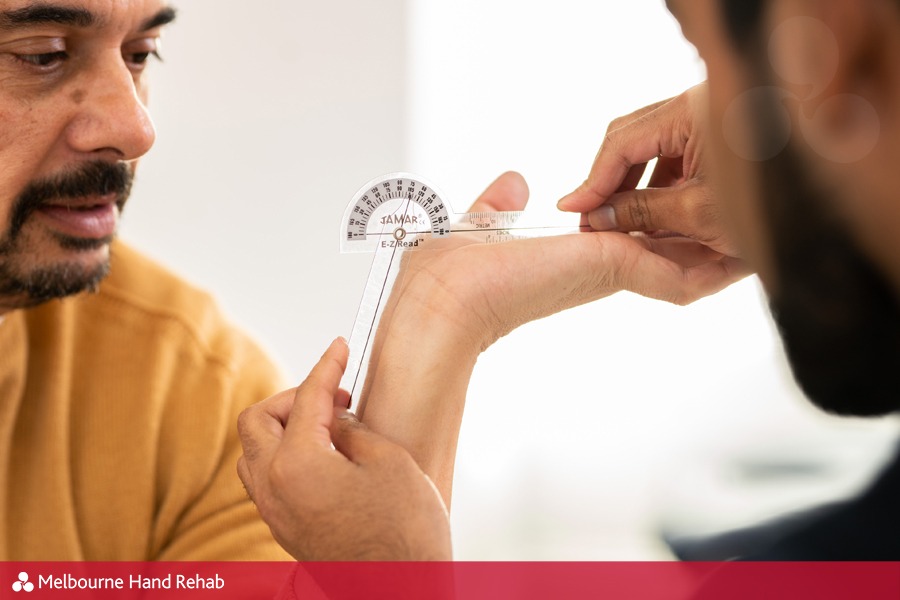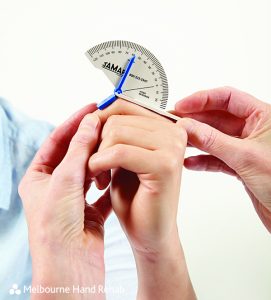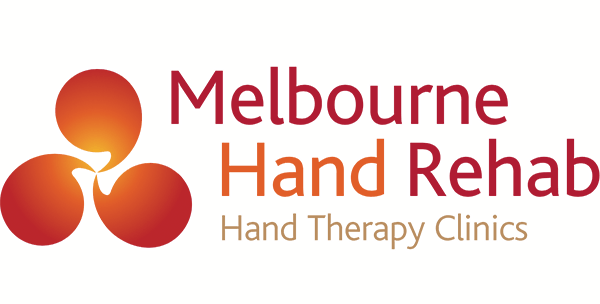
20 Mar What is a goniometer?
Unlocking movement: The role of goniometers in Hand Therapy
What is a goniometer?
A goniometer is a device used to measure the range of motion (ROM) of joints in the human body. It consists of a circular protractor-like scale marked in degrees, along with two arms, one stationary and the other movable, enabling precise measurement of joint angles. In hand therapy, goniometers come in various sizes and designs tailored to fit the intricacies of hand and wrist joints.

Why does my Hand Therapist use a goniometer?
The human hand is a marvel of complexity, comprised of numerous bones, joints, ligaments, and tendons working in harmony to execute a vast array of movements. Injuries, surgeries, or conditions such as arthritis can disrupt this harmony, leading to pain, stiffness, and limited function. Your hand therapist will use a goniometer to assess the extent of these limitations accurately.
The movement of a particular joint can be impacted by a range of factors such as:
- arthritis
- ligament injury
- bone injury
- tendon injury

Goniometer for assessment and treatment
Hand therapists utilise goniometers in both assessment and treatment phases of therapy. During assessment, therapists employ goniometers to measure the initial ROM of affected joints, establishing a baseline for treatment progression.
Throughout therapy, goniometers aid therapists in tracking improvements in joint mobility, guiding the adjustment of treatment plans as needed.
Goniometers assist hand therapists in prescribing tailored exercises aimed at improving joint flexibility, strength, and coordination. By precisely measuring joint angles, your Hand Therapist can ensure that exercises target specific areas of limitation effectively, promoting optimal recovery.

Melbourne Hand Rehab client Steph Browitt during during a hand therapy appointment. Find out more about Steph’s story here.
What to expect at your appointment
There are different sized goniometers for the different sized joints one has, from their shoulder all the way down to the tip of their fingers. You may find that when you see your hand therapist, they have three different goniometers for the fingers, wrist, elbow and shoulder. Only one of these goniometers may be used on you.
A goniometer will be placed at the centre of a joint, with each arm placed on important anatomical landmarks. When the goniometer is correctly placed your therapist will ask you to bend or straighten that joint. The angle that is achieved will be documented for comparison of progress in future appointment.
The number of times that your Hand Therapist uses the goniometer will be dependent on the program that you and your Hand Therapist will decide on.



